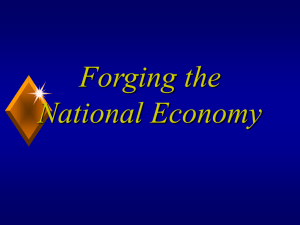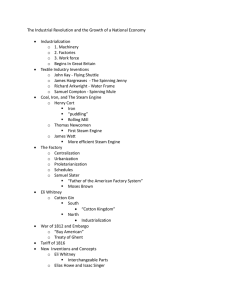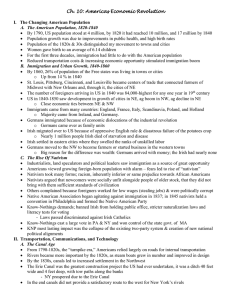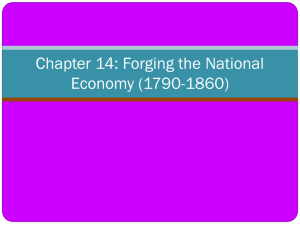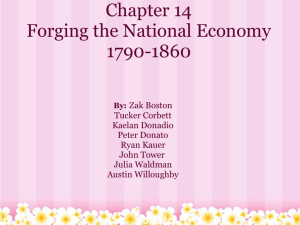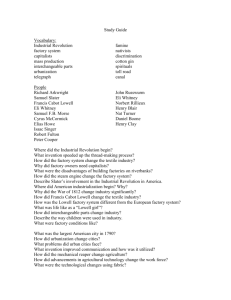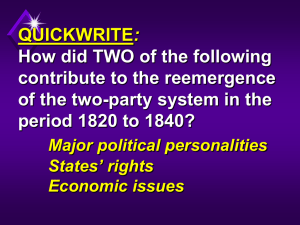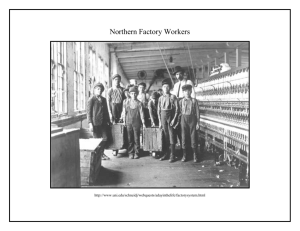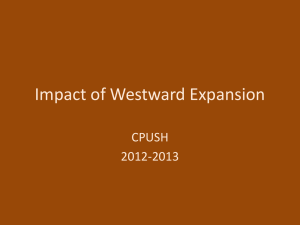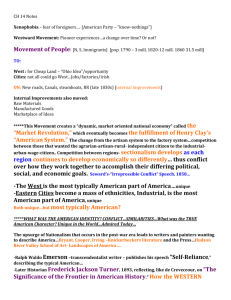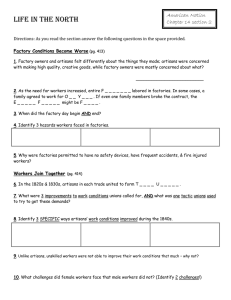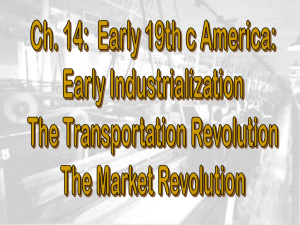chapter 14
advertisement
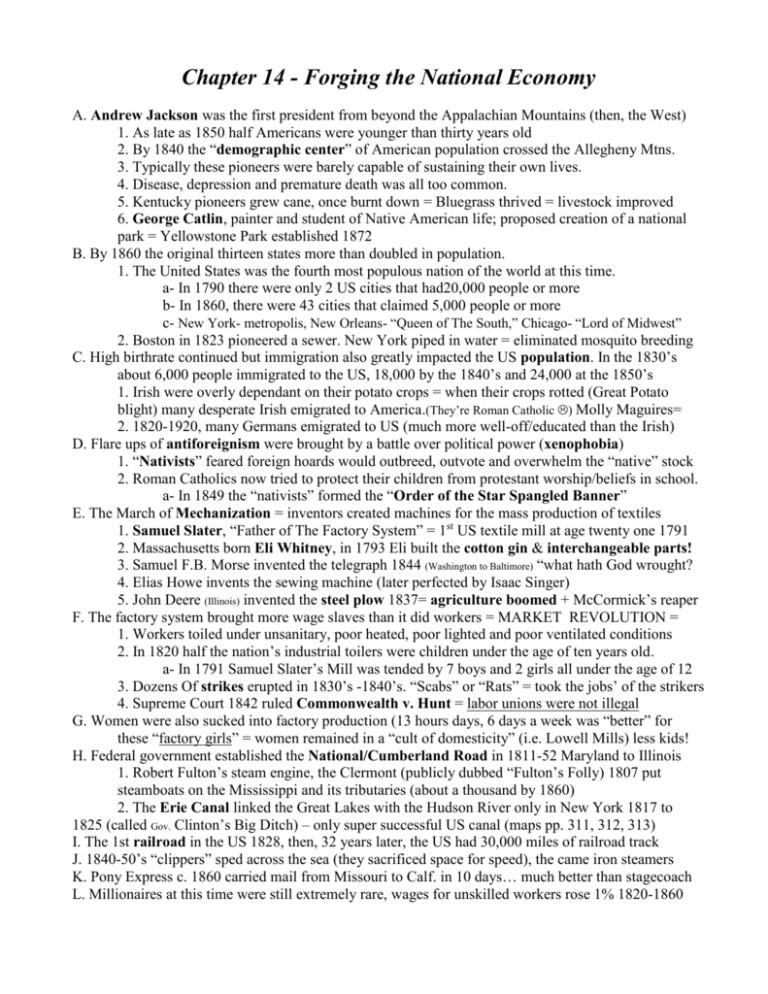
Chapter 14 - Forging the National Economy A. Andrew Jackson was the first president from beyond the Appalachian Mountains (then, the West) 1. As late as 1850 half Americans were younger than thirty years old 2. By 1840 the “demographic center” of American population crossed the Allegheny Mtns. 3. Typically these pioneers were barely capable of sustaining their own lives. 4. Disease, depression and premature death was all too common. 5. Kentucky pioneers grew cane, once burnt down = Bluegrass thrived = livestock improved 6. George Catlin, painter and student of Native American life; proposed creation of a national park = Yellowstone Park established 1872 B. By 1860 the original thirteen states more than doubled in population. 1. The United States was the fourth most populous nation of the world at this time. a- In 1790 there were only 2 US cities that had20,000 people or more b- In 1860, there were 43 cities that claimed 5,000 people or more c- New York- metropolis, New Orleans- “Queen of The South,” Chicago- “Lord of Midwest” 2. Boston in 1823 pioneered a sewer. New York piped in water = eliminated mosquito breeding C. High birthrate continued but immigration also greatly impacted the US population. In the 1830’s about 6,000 people immigrated to the US, 18,000 by the 1840’s and 24,000 at the 1850’s 1. Irish were overly dependant on their potato crops = when their crops rotted (Great Potato blight) many desperate Irish emigrated to America.(They’re Roman Catholic ) Molly Maguires= 2. 1820-1920, many Germans emigrated to US (much more well-off/educated than the Irish) D. Flare ups of antiforeignism were brought by a battle over political power (xenophobia) 1. “Nativists” feared foreign hoards would outbreed, outvote and overwhelm the “native” stock 2. Roman Catholics now tried to protect their children from protestant worship/beliefs in school. a- In 1849 the “nativists” formed the “Order of the Star Spangled Banner” E. The March of Mechanization = inventors created machines for the mass production of textiles 1. Samuel Slater, “Father of The Factory System” = 1st US textile mill at age twenty one 1791 2. Massachusetts born Eli Whitney, in 1793 Eli built the cotton gin & interchangeable parts! 3. Samuel F.B. Morse invented the telegraph 1844 (Washington to Baltimore) “what hath God wrought? 4. Elias Howe invents the sewing machine (later perfected by Isaac Singer) 5. John Deere (Illinois) invented the steel plow 1837= agriculture boomed + McCormick’s reaper F. The factory system brought more wage slaves than it did workers = MARKET REVOLUTION = 1. Workers toiled under unsanitary, poor heated, poor lighted and poor ventilated conditions 2. In 1820 half the nation’s industrial toilers were children under the age of ten years old. a- In 1791 Samuel Slater’s Mill was tended by 7 boys and 2 girls all under the age of 12 3. Dozens Of strikes erupted in 1830’s -1840’s. “Scabs” or “Rats” = took the jobs’ of the strikers 4. Supreme Court 1842 ruled Commonwealth v. Hunt = labor unions were not illegal G. Women were also sucked into factory production (13 hours days, 6 days a week was “better” for these “factory girls” = women remained in a “cult of domesticity” (i.e. Lowell Mills) less kids! H. Federal government established the National/Cumberland Road in 1811-52 Maryland to Illinois 1. Robert Fulton’s steam engine, the Clermont (publicly dubbed “Fulton’s Folly) 1807 put steamboats on the Mississippi and its tributaries (about a thousand by 1860) 2. The Erie Canal linked the Great Lakes with the Hudson River only in New York 1817 to 1825 (called Gov. Clinton’s Big Ditch) – only super successful US canal (maps pp. 311, 312, 313) I. The 1st railroad in the US 1828, then, 32 years later, the US had 30,000 miles of railroad track J. 1840-50’s “clippers” sped across the sea (they sacrificed space for speed), the came iron steamers K. Pony Express c. 1860 carried mail from Missouri to Calf. in 10 days… much better than stagecoach L. Millionaires at this time were still extremely rare, wages for unskilled workers rose 1% 1820-1860
